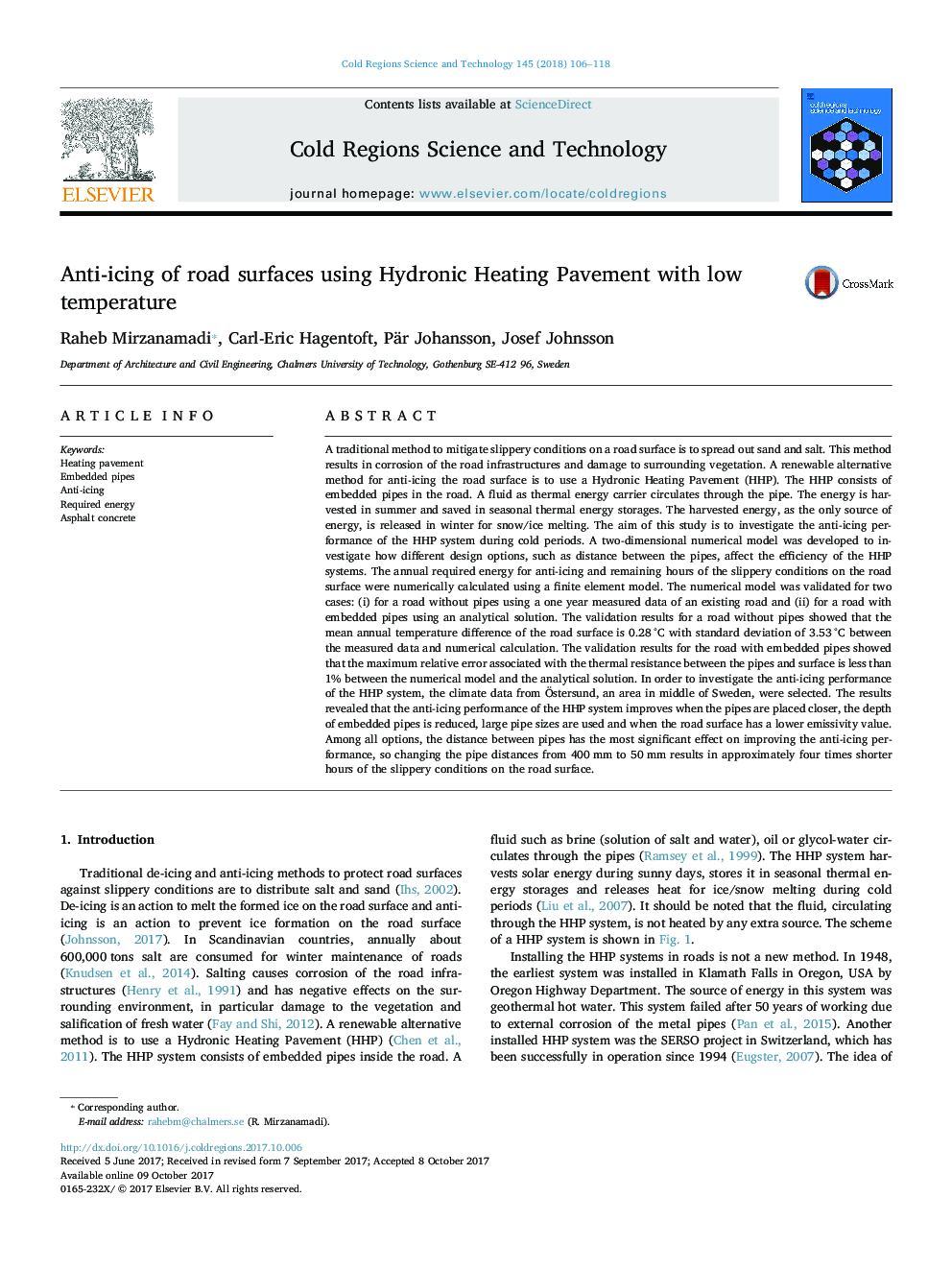| کد مقاله | کد نشریه | سال انتشار | مقاله انگلیسی | نسخه تمام متن |
|---|---|---|---|---|
| 5779328 | 1634419 | 2018 | 13 صفحه PDF | دانلود رایگان |
عنوان انگلیسی مقاله ISI
Anti-icing of road surfaces using Hydronic Heating Pavement with low temperature
دانلود مقاله + سفارش ترجمه
دانلود مقاله ISI انگلیسی
رایگان برای ایرانیان
موضوعات مرتبط
مهندسی و علوم پایه
علوم زمین و سیارات
علوم زمین و سیاره ای (عمومی)
پیش نمایش صفحه اول مقاله

چکیده انگلیسی
A traditional method to mitigate slippery conditions on a road surface is to spread out sand and salt. This method results in corrosion of the road infrastructures and damage to surrounding vegetation. A renewable alternative method for anti-icing the road surface is to use a Hydronic Heating Pavement (HHP). The HHP consists of embedded pipes in the road. A fluid as thermal energy carrier circulates through the pipe. The energy is harvested in summer and saved in seasonal thermal energy storages. The harvested energy, as the only source of energy, is released in winter for snow/ice melting. The aim of this study is to investigate the anti-icing performance of the HHP system during cold periods. A two-dimensional numerical model was developed to investigate how different design options, such as distance between the pipes, affect the efficiency of the HHP systems. The annual required energy for anti-icing and remaining hours of the slippery conditions on the road surface were numerically calculated using a finite element model. The numerical model was validated for two cases: (i) for a road without pipes using a one year measured data of an existing road and (ii) for a road with embedded pipes using an analytical solution. The validation results for a road without pipes showed that the mean annual temperature difference of the road surface is 0.28 °C with standard deviation of 3.53 °C between the measured data and numerical calculation. The validation results for the road with embedded pipes showed that the maximum relative error associated with the thermal resistance between the pipes and surface is less than 1% between the numerical model and the analytical solution. In order to investigate the anti-icing performance of the HHP system, the climate data from Ãstersund, an area in middle of Sweden, were selected. The results revealed that the anti-icing performance of the HHP system improves when the pipes are placed closer, the depth of embedded pipes is reduced, large pipe sizes are used and when the road surface has a lower emissivity value. Among all options, the distance between pipes has the most significant effect on improving the anti-icing performance, so changing the pipe distances from 400 mm to 50 mm results in approximately four times shorter hours of the slippery conditions on the road surface.
ناشر
Database: Elsevier - ScienceDirect (ساینس دایرکت)
Journal: Cold Regions Science and Technology - Volume 145, January 2018, Pages 106-118
Journal: Cold Regions Science and Technology - Volume 145, January 2018, Pages 106-118
نویسندگان
Raheb Mirzanamadi, Carl-Eric Hagentoft, Pär Johansson, Josef Johnsson,